P.I. Tchaikovsky ballet "The Nutcracker"
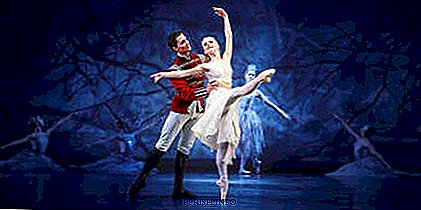
The most magical and Christmas work of P.I. Tchaikovsky, known throughout the world - the ballet "The Nutcracker". Often, in classical operas or ballets there are one or several well-known numbers that become significant for the work and beloved by the public. You cannot say the same about The Nutcracker, because the whole ballet consists of such “hits”! Perhaps this is the most recognizable work in the whole world. What is worth the fascinating Dance of the Fairy Dragee, the gentlest Waltz of Flowers, a series of dances: Chocolate, Coffee, Tea and many others. And who of the children, after all, did not dream of being in the place of Marie and the Nutcracker in this fabulous place of chocolate, caramel, marshmallow and other goodies ?!
A summary of Tchaikovsky's The Nutcracker ballet and many interesting facts about this piece are available on our page.
Characters | Description |
| Stalbaum | medicine counselor, it is in his house that all events unfold |
| Marie | daughter of Stahlbauma, who received the Nutcracker as a gift |
| Fritz | brother Marie, who broke the Nutcracker at the festival |
| Drosselmeyer | godmother Marie, who presented her the Nutcracker and told about the wonderful city |
| Nutcracker | enchanted prince |
| Fairy Dragee | sovereign in the magical city Confitiureburg |
| Prince Whooping Cough | prince from a fairytale city, meeting a girl and a nutcracker |
| King of Mice | the evil lord of a hostile army of mice that attacked the Nutcracker |
The Nutcracker Summary

The main events in the ballet unfold on the eve of a big and bright holiday - Christmas.
In the house of Stahlbaum, guests and the godfather Mari, who came with a bunch of gifts for children, gathered. Among them, a doll intended for chopping nuts, the Nutcracker, stands out. Marie liked the rather clumsy toy with a wide smile. All the children had already gone to sleep, but she still could not part with the Nutcracker.
The girl began to play so hard that she did not notice how everything began to change around. The Christmas tree has become enormous and there was a strange rustle. An army of mice appeared in the room, and the Nutcracker himself suddenly came to life, becoming a beautiful youth. He immediately assembled an army of soldiers and went to the enemy, but their forces were unequal. Marie, seeing this, decided to help the Nutcracker and threw her shoe at the King of Mice. The enemies were frightened by the sudden attack and fled.
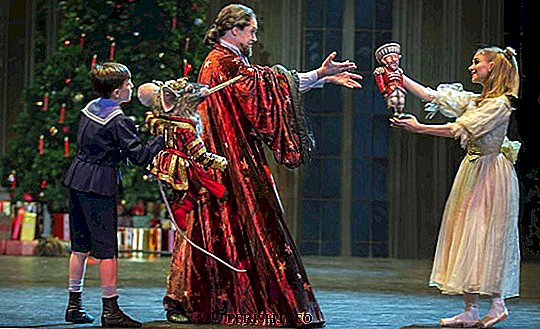
When Marie woke up, her godfather, Drosselmeyer, appeared in the image of a wizard. He spoke about an amazing fairy-tale world, which is not easy enough to get in, overcoming a snowstorm. But Marie and the Nutcracker go to this country. They find themselves in the wonderful city of Confituurburg, where there are a lot of sweets and guests to greet them. Fairy Dragee arranges a magnificent ball in their honor and Marie becomes a real princess, after the Nutcracker told how she saved him. When the celebration ends, the wizard helps Marie return home from her wonderful journey.
| Duration of performance | |
| I Act | Act II |
| 50 min | 50 min |
A photo:


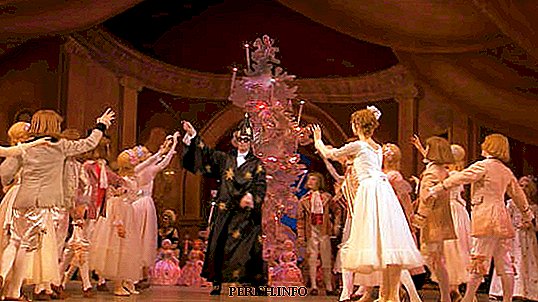
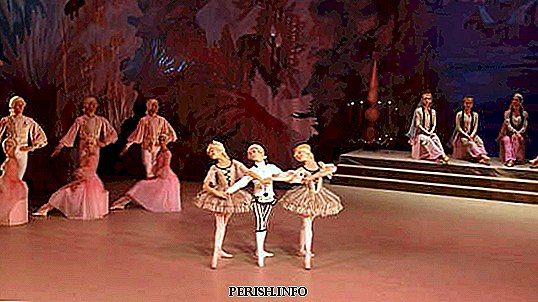
The Interesting Facts about the Nutcracker
- There is evidence that at the first ballet performance at the Mariinsky Theater (December 1892), the public was extremely surprised by the exact sound of the orchestra. In particular, the musical instrument celesta caught their attention.
- Starting with the productions of The Nutcracker, a tradition has arisen of giving secondary roles to students of dance schools.
- Dance "Coffee" is based on the Georgian folk lullaby.
- According to the content of the German legend, the nutcrackers bring good luck and protect the house. Therefore, these wooden mechanical dolls were popular as Christmas gifts for children.
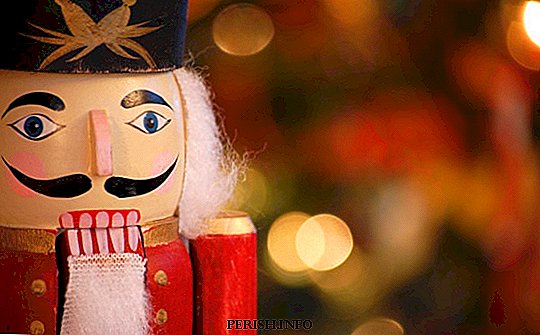
- The Christmas tree, which is usually installed on the stage in the first act, weighs about a ton.
- During the gentle dance of snowflakes, confetti, the total mass of which is about 20 kg, falls onto the stage.
- For the whole performance, about 150 different costumes are shown on the stage.
- To complete the work of all the equipment, make-up and change of costumes behind the scenes during the performance should be about 60 people.
- Usually up to 700 light fixtures are used for ballet lighting.
- On one pack of Fairy Dragee goes 7 layers of tulle.
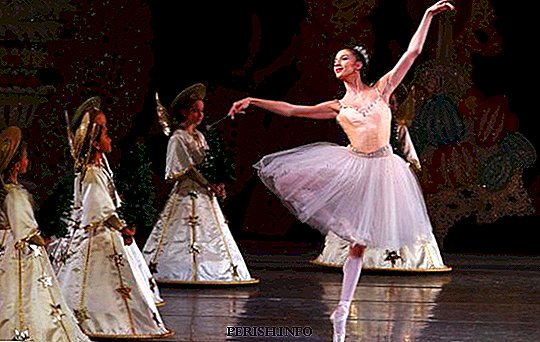
- There is some confusion in the girl’s names (Marie, Masha or Klara). In fact, as stated in the original source, Clara is just a doll of a girl named Marichen. In French style, her name sounds like Marie, this is the version that went to the director of the Imperial Theaters Vsevolzhsky. In Soviet productions, starting in 1930, the ballet was Russified and the girl Marie received the name Maria, and her brother became Misha. Also, the Christmas holiday was replaced by the New Year.
- Before starting to write ballet, Tchaikovsky first wrote the whole story from the words of Vsevolzhsky and later began to compose music.
- The magical city Confitiurenberg from the second act also came up with Vsevolzhsky.
- The largest silk nut was made in Germany and had a height of over 10 meters.
- Frank Russell Galy played the part of the Nutcracker at a record age, at that time he was 74 years old and 101 days old.
Popular Nutcracker Numbers
Waltz of the Flowers (listen)
March from Action I (listen)
Dance Fairy Drazhe (listen)
Snow Flake Waltz (listen)
Pas de Maries and The Nutcracker - Adagio (listen)
Music
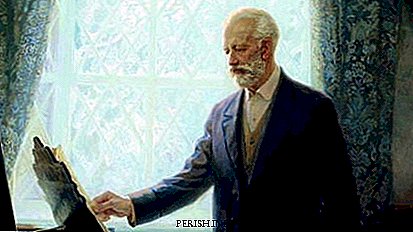
Pyotr Ilyich embodies themes already known to him in ballet - overcoming hostile forces thanks to the power of love. Music is saturated with new expressive images. It is interesting to observe how expressiveness is combined with visual, vibrant theatricality and deepest psychologism.
The musical fabric of the ballet is very bright and full of strong, memorable numbers. So, before the scene of the growth of the tree from the first act sounds unusually expressive music. It begins ghostly, passing the mouse fuss. Gradually, it acquires a wider scope, transforming into an unfolding melody.
Chaikovsky I tried to make the music very subtly convey the entire content of the fairy tale that occurs on the stage: drumming, fanfare or squeaking of mice. Particularly loved by the public is the Divertimento II Act, which encloses a series of dances at a ball in a fabulous country. This is a bright Spanish dance - Chocolate, exciting Oriental - Coffee, typical Chinese - Tea, as well as an unusually bright and lively - Trepak. Next comes the elegant dance of the cowherd boys, Mother Gigon and the pearl of the Divertimento - Waltz of the Flowers with its bewitching melody. Dance of the Fairy Dragee attracts with its sophistication, and the real lyrical and dramatic climax can be safely called adagio.
The story of the creation of the "Nutcracker"
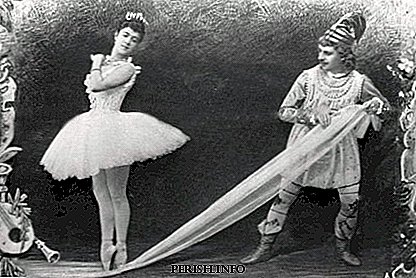
In 1890, Pyotr Ilyich Tchaikovsky was offered to compose an opera consisting of one act and a ballet. According to the plan these works were to be performed in one evening. He began working on ballet with Marius Petipa. It is noteworthy that when writing the score, Tchaikovsky constantly consulted with him, even about the music. The work proceeded fairly quickly, however, in the spring of 1891, Pyotr Ilyich was forced to pause. The reason was valid - he went to the USA, where the long-awaited opening of the famous Carnegie Hall took place. There is information that Tchaikovsky managed to compose even while on the boat, since he was afraid not to meet the deadline.
Despite all his efforts, the composer was forced to send Vsevolzhsky a letter from Paris and ask him to postpone the premiere a little. As soon as Tchaikovsky returned, the work went much more productively. So, by February 1892, he had completely finished his play. The premiere of the suite from The Nutcracker was held in the Russian Musical Society under the direction of the author. The public enthusiastically met the composer's new work. At this time, Petipa became seriously ill and the role of choreographer was now performed by L. Ivanov, who was just finishing his career as a dancer and had previously tried himself as a choreographer. Since Petipa could not already work on the libretto, composer brother Modest Tchaikovsky continued to create it. Work in the theater on the production began in the autumn of 1892, and the premiere was scheduled for December of the same year.
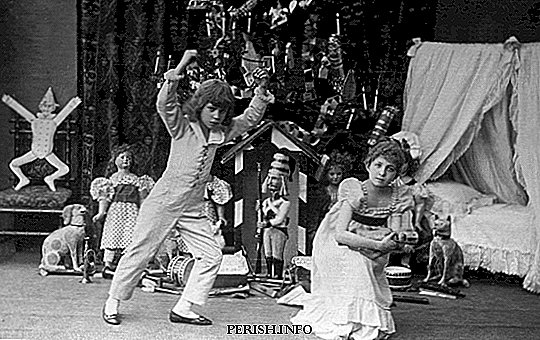
The literary basis of the ballet "The Nutcracker"
The original source of the famous performance was the German fairy tale E.TA Hoffmann's The Nutcracker and the Mouse King, published in 1861. In the story of Marichen, Stalbaum receives from his godfather a small doll intended for chopping nuts from his godfather. That same night, the Nutcracker miraculously comes to life and enters into a strong and unequal struggle with a squad of cunning mice. In the morning, the godfather Drosselmeyer told the girl an interesting story about his nephew, enchanted by the evil king of mice. And at night, Marichen, along with her doll Clara and the Nutcracker were again attacked by enemies. Having managed to defeat the insidious army, they all together went to the fairy kingdom, where the girl was elected a princess.
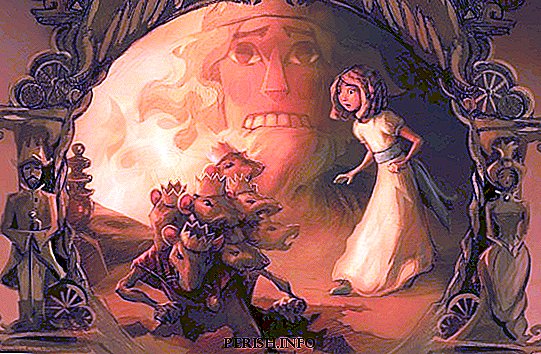
This tale was translated by the writer Emile Labedoller into French in 1838. It is this translation that went to the famous writer Alexandre Dumas. It is curious that he decided to create his own version of the work. This slightly modified version of the fairy tale, with some digressions, caught I.A. Vsevolzhsky, who decided to create a ballet.
The Nutcracker Performances
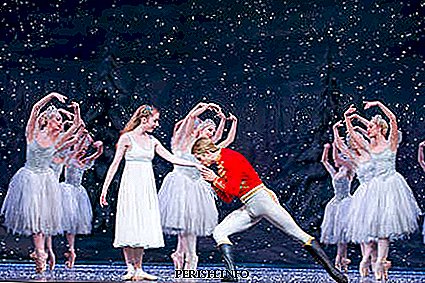
The first production of "The Nutcracker" with the opera "Iolanthe"took place in December 1892 at the Mariinsky Theater. Vsevolzhsky himself was involved in designing costumes, R. Drigo stood at the conductor's stand. Success was overwhelming, although information remained that the public liked the opera more at first. Despite the fact that there was no single action It turned out, as the theater director planned, separately these were wonderful performances and they were no longer used in one program. They recognized the work of L. Ivanov as magnificent, especially the critics noted the dance of aerial snowflakes created by him. The ballet remained in the repertoire of the theater for another 30 years. In 1923, choreographer F. Lopukhov again turned to Tchaikovsky’s performance, and an updated version of The Nutcracker was released in 1929. After that, the ballet was repeatedly staged at various world stages. Productions include the version of choreographer George Balanchine, performed in New York in 1954. And this production has been gathering more and more enthusiastic spectators every year for more than 50 years. Along with theatrical performances, the ballet has also been repeatedly filmed.
Many multipliers paid attention to the music of "The Nutcracker". In 1940, a cartoon came out at Walt Disney StudiosFantasy", which presents some fragments from the ballet. In Soviet times, Boris Stepantsev created his famous cartoon on the tale of Hoffmann, also with Tchaikovsky's music. You can learn more about these versions in the special section "Music from cartoons".
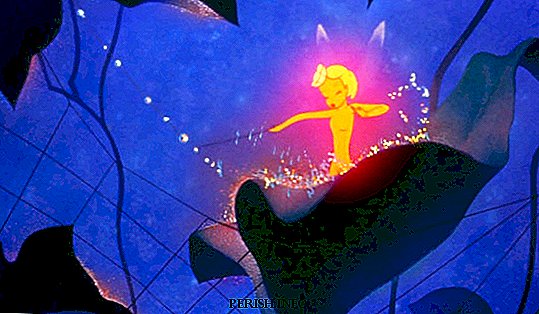
For unusual productions include version of Matthew Bourne - British choreographer. It has nothing to do with the classical version of the ballet, nevertheless, it reflects music well. In particular, he gave a different interpretation of the Pas de deux from the second act. Events moved to a shelter for street children, where they are looked after by Dr. Dross. The dream of the protagonist is not at all the same as in the original version. Everything is unstable in it and any objects suddenly turn into various things, sometimes even ominous. And the heroes themselves are separated because of rival Marie, and the Nutcracker himself loses his memory at all.
Well deservedly, the performance is a real gem of world ballet. Since the time of the first premiere, it has been successfully put on all famous world scenes. The Nutcracker music can be heard in the movies, in a variety of cartoons, and even in computer games. Modern choreographers gladly use this ballet, bringing innovations to it, changing the plot, the scene, introducing modern dances. Only one thing remains untouched - this is amazingly beautiful, fascinating listeners from the very first magical sounds of Tchaikovsky’s music.

Leave Your Comment